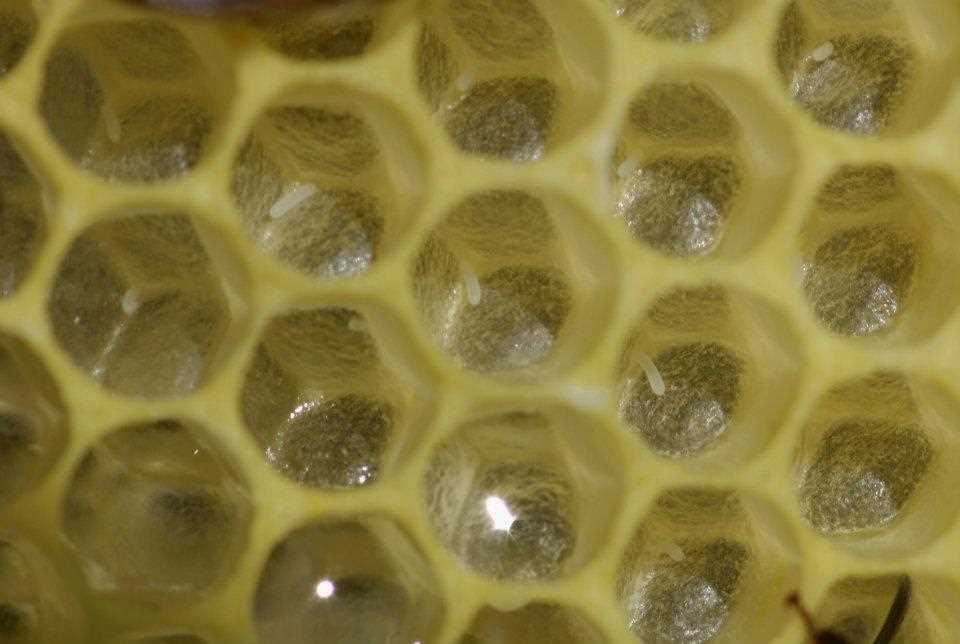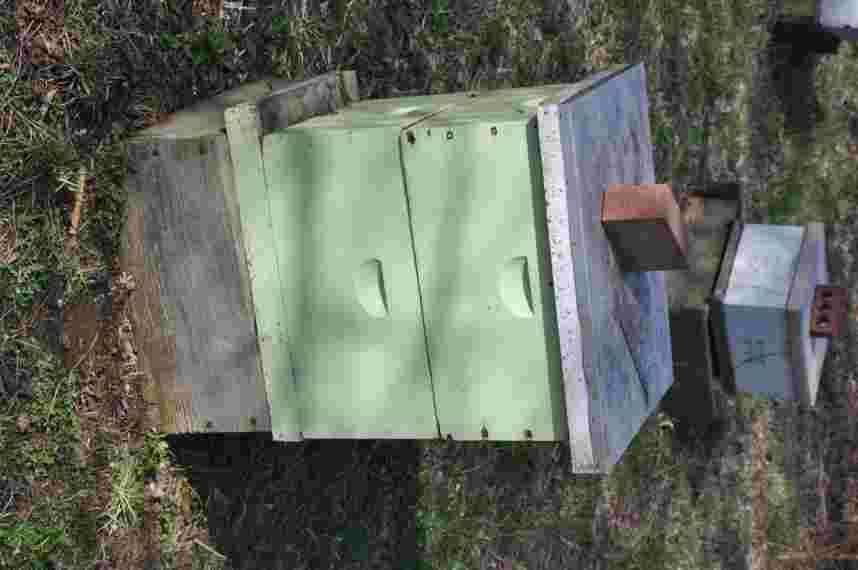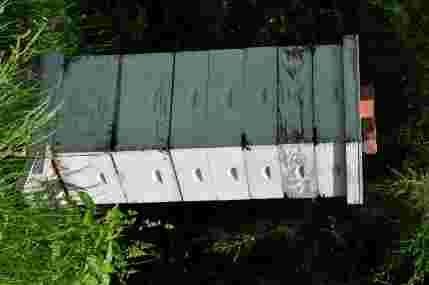In February I wrote about my “First look of the new year into my hives” (February 13, 2023 post), about a first of the year check of my colonies that I had performed a couple of days earlier. On that visit, which is typical of my first early looks into my hives of the year, I did not remove any frames. I merely observed the honey bee cluster between the frames, after removing the lids. That gave me all the information that I needed at the time – this told me that the bees in the colony had survived the winter, and the size (number of bees) of the hive’s cluster. An early indication of colony strength. Then in March, after a period of warm spring like weather, I wrote another post concerning my first complete inspection of my colonies - “What I look for on the frames when checking my hive“ (March 6, 2023 post).
During this check I removed and observed all the brood frames in my colonies to take a closer look about how each was faring. This spring check in March – which was the start of an early spring here in Kentucky, was my first serious hive inspection of the hives in my apiary. This thorough spring hive inspection is typically the only complete check I do of my hives in the spring – meaning a check where I look at every frame in all the hives in my beeyard. After this first inspection I do spot checks to tell me that all still looks well. The purpose of the detailed early spring check, done in March or April depending on in hives when spring arrives, is to conform that:
- My queen is present in each hive, that she is a “laying queen”, busy laying eggs. In the first early spring check I am content to see a couple of frames with eggs & developing larvae, and some mature, capped brood.

This queen/egg & larvae check also tells me that my colonies are busy rearing brood. Remember: The queen’s task is to lay the eggs in the colony, the nurse bees feed the larvae, and as the larvae ages, they cap the brood cells. This is sometimes called separation of reproduction, where the queen lays the eggs, and the workers care for the colony’s offspring. And I say that colonies in the spring are all about growth, more brood, more bees, and then more honey.

- I also check to make certain that there are sufficient honey stores in all my colonies to feed the colony’s adult bees, and that they in turn are well fed so that they may feed the developing larvae. I am not concerned that there are large stores of honey, just enough for the next couple of weeks, as this check is done after the spring honey flow has begun, and the foraging bees are bringing in a constant supply of nectar and pollen. I just wish to ensure that the colonies have sufficient stored honey, and nectar, as well as pollen, to survive & grow in case of poor weather (when bees cannot fly) or when short periods of lack of rainfall might temporarily reduce local natural food sources.
- As well as honey stores, some of which may be left over honey stores from the winter – especially in the top brood box, I am paying attention to fresh nectar being brought into my colonies, as well as pollen – both stored & fresh pollen. A beekeeper can tell the difference in the age of pollen by the bright colors of fresh pollen. Typically pollen is abundant, but if it is not I will feed artificial pollen made into patties. I also feed pollen to nucs that I make up, or captured swarms.
- I am also looking for any signs that are unusual, and may be indicative of disease, such as brood that does not look normal, or bees that exhibit unusual characteristic, such as deformed wings (which may indicate the presence of deformed wing virus – and a high mite infestation. Also hive strength is a factor, are the hives growing.
- Throughout the year, starting in spring on every hive visit, I remove mature drone brood (and sometimes worker brood & larvae) to confirm that I am not seeing an increase in varroa numbers in my colonies. I do these constant varroa checks as well as systematic alcohol washes in the spring to monitor varroa numbers. In addition to monitoring, I conducted a mid-winter (early January) application of Apivar to control varroa numbers but I continue to do constant surveillance of brood for varroa until I re-check colonies with alcohol washes after pulling honey in July.

As the spring progresses, and prior to the adding of honey supers to my hives, I conduct “spot checks” on my colonies about every week to ten days, to ensure that all continues to be well. On these checks I am looking to ensure that in my colonies:
- The queen is still present in all my hives and laying eggs. I do not worry about seeing the queen but want to see increasing numbers of brood frames with eggs, developing larvae, and capped brood. That tells me that the queen is present & laying eggs, and that the colonies are growing. As spring progresses, I expect to see several frames of eggs and more frames of developing capped brood. At some point as many as five or more frames of capped brood, at which time I will make nucs to decrease the likelihood of swarming in my colonies. (In mid-March after queens were available for purchase - reared in states further south, I made nucs from my overwintered colonies.)
- As spring progresses I keep an eye on the number of frames of stored honey in my colonies. By late March having enough honey in my brood boxes is typically not a problem, as the nectar flow is well under way. But I am always concerned that I have sufficient empty frames of brood comb for the colony to rear brood in and raise new bees. My management goal is to balance some honey storage in the brood boxes (enough) with ample brood production. I will always add a frame (or two) of honey in each nuc I make and will move frames of honey from one colony to another to balance store honey storage in colonies. I will also sometimes move frames of capped brood between colonies to help slow down swarming urges of colonies, and balance brood. Spring is a tightrope of my beekeeping management of having strong colonies (LOTS of bees for honey production) against allowing the uncontrolled growth of colonies urge to swarm. My goal is STRONG colonies, maximum honey production, and ideally NO swarming. But I watch the trees every day for swarms. And keep an empty hive or two in my bee yard in which to place a swarm.
- I also take note of pollen storage, but by April this is also normally not a problem. But I do make and add protein patties (made of artificial pollen substitute and sugar syrup) to new nucs. This is to ensure that young nurse bees have sufficient nutrition means to produce brood food, and royal jelly for developing queens.

- I will take note of how many frames in my brood boxes (I use 2 deep brood boxes, each with 10 frames) that the bees utilize for honey and brood production. This is my guide for adding honey supers - when the bees are using about 7 to 8 frames – meaning colonies with brood or nectar/honey - in each brood box, I add a queen excluder, along with two to three boxes of drawn honey comb (which I have stored from last year) to each overwintered colony.

- Starting about a week to 10 days after initial supering of hives, and then throughout the nectar flow, I will check the top honey super in each hive. If that top box is empty, or nearly empty of bees, I just replace the lid on the hive. If there are lots of bees in the top honey super, I add another. Experience has taught me that there is no need to check under that top honey super. I know it is either full of honey, or is close (lots of fresh nectar, and often honey being capped) it is time to add another honey super.
Once I have two full honey supers on each colony, my hive management is checking honey supers to determine if I need to add more. I normally do not remove honey supers to check brood boxes below until after I pull honey I late June through mid-July. The dates mainly depends on rainfall, drought, and the continuation of the nectar flow. In my home area, most years we enter a mid-summer drought, which ends the nectar flow, and when I pull honey. This time of year much of my time is with management and creating new nucs, and queens for these new nucs.
